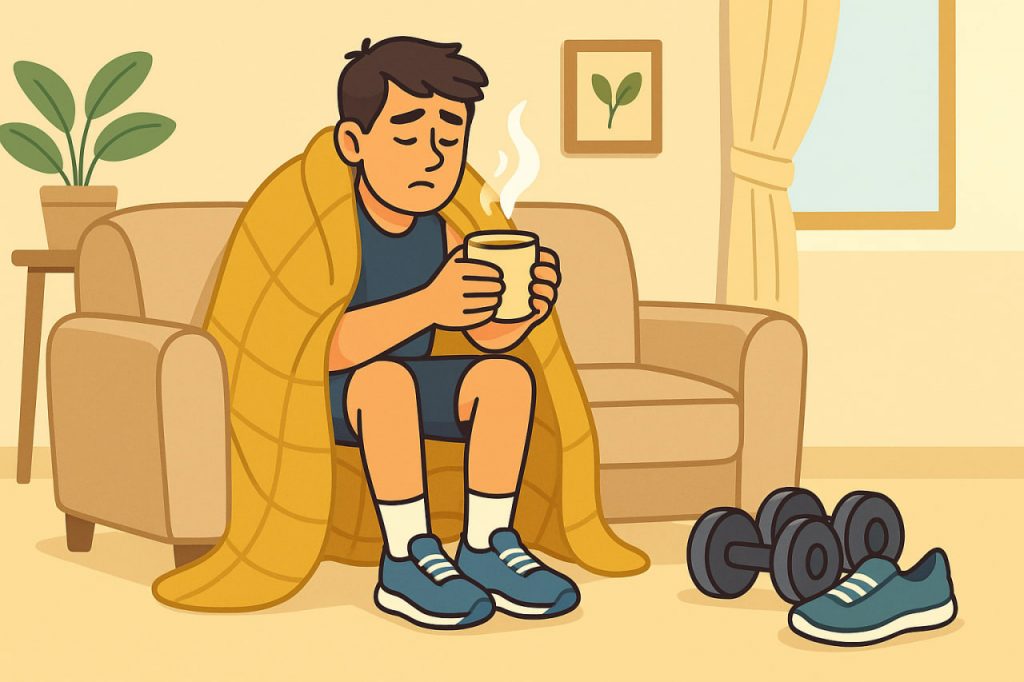When a person gets sick, the immune system becomes the main defense mechanism against infection. During this time, the body directs its energy and resources toward fighting pathogens such as viruses or bacteria. Engaging in intensive training may overload the body, slowing down recovery and potentially worsening symptoms.
The “Neck Rule” in Sports Medicine
Sports medicine experts often use the “neck rule”. If symptoms are only above the neck — such as a runny nose, mild sore throat, or slight headache — light activity may be allowed. However, if symptoms include fever, chest pain, body aches, or cough, physical exercise is strictly not recommended.
Risks of Training During Illness
- Weakened immunity: heavy loads reduce the immune system’s ability to fight infection.
- Heart risks: fever combined with physical exertion may increase the risk of myocarditis.
- Longer recovery: training while ill may prolong symptoms.
- Complications: infections may spread to deeper organs (lungs, heart, kidneys).
When Light Activity Is Acceptable
In some cases, gentle stretching, walking, or yoga may be beneficial. Such activities improve circulation and can help relieve stress without overloading the body. Still, intensity should be minimal, and if symptoms worsen, training must be stopped immediately.
Recovery First
Doctors recommend that during an illness, the priority should be rest, hydration, and proper nutrition. After recovery, it is advisable to gradually return to training, starting with light loads and carefully monitoring the body’s response.
Interesting Facts
Exercising while sick can have very different effects depending on the type and severity of the illness. Light to moderate physical activity, such as walking or gentle stretching, can sometimes boost the immune system when symptoms are limited to the nose and throat (like a mild cold). However, if you have fever, muscle pain, or chest congestion, training can increase stress hormones and delay recovery. Studies show that moderate exercise supports immune cell circulation, but intense workouts suppress it for up to 72 hours. Interestingly, athletes who continue heavy training while ill are at higher risk of myocarditis, an inflammation of the heart muscle. So while movement is generally beneficial, knowing when to rest is a key part of long-term fitness and health.
Conclusion
Training during illness is rarely beneficial and often risky. The body needs rest to recover, and attempts to train through sickness may lead to complications. The safest approach is to allow yourself time to heal and only then resume workouts.
Glossary
- Immune system – the body’s defense mechanism against infections.
- Pathogens – disease-causing microorganisms such as viruses or bacteria.
- Myocarditis – inflammation of the heart muscle, sometimes triggered by viral infections.
- Complications – negative health consequences that develop due to untreated or worsened illness.
- Sports medicine – medical discipline focused on physical activity and athlete health.


